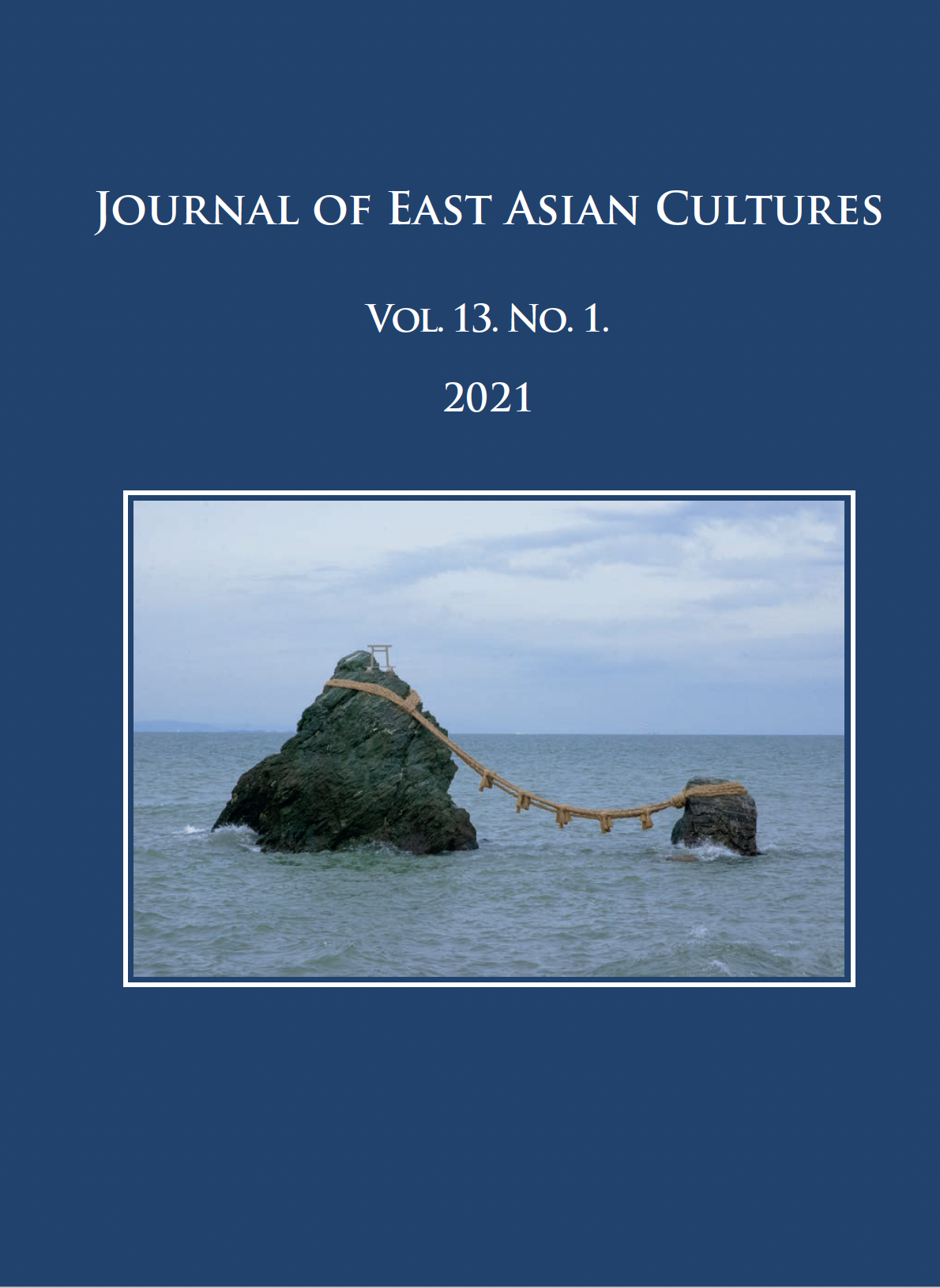Megjelent 2021-12-15
Kulcsszavak
- mongol buddhizmus,
- szerzetessé válás,
- szerzetesi élet,
- szerzetesség és család,
- szerzetesgenerációk
Hogyan kell idézni
Copyright (c) 2021 a szerző(k)

This work is licensed under a Creative Commons Attribution-NonCommercial 4.0 International License.
Absztrakt
A múlt század jelentős változásokat hozott Mongólia történetében a Bogd kán teokratikus uralmától kezdve (1911–1921) a szocializmuson át (1921–1989) a demokráciáig. Jelen cikk a szerzetessé válás, azaz az „otthonból az otthontalanságba” távozás XX. század eleji és végi, XXI. század eleji formáit és lehetőségeit szemlélteti. Írott források híján személyes beszélgetések világítanak rá a szerzetesnövendékek motivációira, családi kötelékeire, családban betöltött szerepére. A beszámolók között három szerzetes-generáció emlékeit találjuk: az 1920–1930-as években fogadalmat tett szerzetesek visszaemlékezéseit, egy 1990-ben fogadalmat tett szerzetes beszámolóját, valamint Mongólia főkolostora, a Gandantegčenlin kolostor Tantrikus iskolája jelenlegi növendékeinek tapasztalatait. A beszámolók rámutattak arra, hogy bár a buddhizmus a rendszerváltás után nem érte el egykori történeti jelentőségét, kizárólagos vallási szerepét Mongóliában, napjainkban a régi hagyományok és újítások együtt élnek. A Vajrayāna hagyományban oly fontos mester és tanítvány kapcsolat kiemelt szerepe azonban mindmáig megmaradt.
Hivatkozások
- Abrahms-Kavunenko, Saskia 2018. “Mustering Fortune: Attraction and Multiplication in the Echoes of the Boom.” Ethnos, Journal of Anthropology 84.1: 1–19. https://doi.org/10.1080/00141844.2018.1511610
- Abrahms-Kavunenko, Saskia 2019. Enlightenment and the Gasping City. Mongolian Buddhism at a Time of Environmental Disarray. Ithaca and London: Cornell University Press. https://doi.org/10.7591/9781501737664
- Abrahms-Kavunenko, Saskia 2019. “Tenuous Blessings: The Materiality of Doubt in a Mongolian Buddhist Wealth Calling Ceremony.” Journal of Material Culture 25.5: 1–14. https://doi.org/10.1177/1359183519857042
- Birtalan, Ágnes (ed.) 2008. Hagyományos Mongol Műveltség I. A mongol nomádok anyagi műveltsége [Traditional Mongolian Culture, Part I. Material Culture]. Budapest: Eötvös Loránd Tudományegyetem, Belső-ázsiai Tanszék.
- Birtalan, Á. – Majer, Zs. – Szilágyi, Zs. – Teleki, K. (eds.) 2015. Buddhizmus a mai Mongóliában [Buddhism in Contemporary Mongolia]. Hagyományos Mongol Műveltség III. [Traditional Mongolian Culture III.] Budapest: Eötvös Loránd Tudományegyetem.
- Boldbātar, £. 2010. Mongolīn burxanī šašnī lam xuwrag [Mongolian Buddhist Monks]. Ulānbātar: Soyombo Printing.
- Forbáth, László 1934. A megujhodott Mongolia [The New Mongolia]. Budapest: Franklin (A Magyar Földrajzi Társaság Könyvtára [Library of the Hungarian Geographical Society]).
- Goldstein, Melvyn C. 2010. “Tibetan Buddhism and Mass Monasticism.” In: Adeline Herrou and Gisele Krauskopff (eds.) Des moines et des moniales dans le monde. La vie monastique dans le miroir de la parenté. Presses Universitaires de Toulouse le Mirail, 1−16. [English version of the French paper]
- Majer, Zs. – Teleki, K. 2019. Öndör nastan lam narīn yaria. ХХ jūnī exen üyeīn xürē xīdǖdīn talār awsan yarianūd II. (2006–2009). [Interviews with Old Mongolian Monks about Monasteries existing in the Early 20th century (2006–2009)]. Ulaanbaatar: Mongolian Academy of Sciences, Institute of History and Ethnology.
- Pozdneyev, Aleksei Matveevich 1978. Religion and Ritual in Society: Lamaist Buddhism in late 19th-century Mongolia. Ed. by J. R. Krueger. Bloomington: The Mongolia Society.
- Sūtra of Nanda’s Ordination (Tib. dga’ bo rab tu byung ba’i mdo). Degé Kangyur, 328, Vol. 72 (mdo sde, sa). 254b–257a. www.84000.co.
- Teleki, K. 2012. Monasteries and Temples of Bogdiin Khüree. Ulaanbaatar: Mongolian Academy of Sciences, Institute of History.
- Teleki, K. 2019. Öndör nastan lam narīn yaria. ХХ jūnī exen üyeīn xürē xīdǖdīn talār awsan yarianūd II. (2007–2017). [Interviews with Old Mongolian Monks about Monasteries existing in the Early 20th century (2007–2017)]. Ulaanbaatar: Mongolian Academy of Sciences, Institute of History and Ethnology.
- Ven. Čoiǰamc, Ūš, Ulānbātar, 18 September 2009.
- Ven. Dašdorǰ, Ceyenxǖ, Jǖn xürē Daščoilin xīd Monastery, Ulānbātar, 2 July 2010.
- Ven. Galsan, Gombo, Dambadarǰālin xīd Monastery, Ulānbātar, 7 July 2010.
- Ven. Ganjorig, Cedendamba – Lxagwadorǰ, Cewegsüren – Mönxbātar, Lxagwaǰancan –Mönx-Erdene, Mönxtüwšin, Gandantegčenlin Monastery, £üd dacan, Ulānbātar, February 2020.
- Ven. Gončig, Darǰā, Ulānbātar, 25 September 2009.
- Ven. Gončig, Sandag, Gandantegčenlin Monastery, Ulānbātar, 13 September 2009.
- Ven. Gončig, Sandag, Gandantegčenlin Monastery, Ulānbātar, 9 November 2010 (conducted in cooperation Claire A. Whitaker).
- Ven. Nandinbātar, Myagmar, Jǖn xürē Daščoilin xīd Monastery, Ulānbātar, 4 February 2020.
- Ven. Osor, Nyam, Šanxīn Barūn xürē, Xarxorin district, Öwörxangai province, 14 April 2010.
- Ven. Perenleiǰamc, Regden, Batcengel district, Arxangai province, 6 August 2010.
- Ven. Sodnomceren, Šülǰin, Ulānbātar, 12 May 2010.
- Ven. Tügǰ, Šiǰir, Lamrim dacan Monastery, Ulānbātar, 3 November 2010 (conducted in cooperation with Claire A. Whitaker).
- https://www.eap.bl.uk/project/EAP264/search (accessed: 10.03.2020).
- http://www.mongoliantemples.org (accessed: 10.03.2020).

